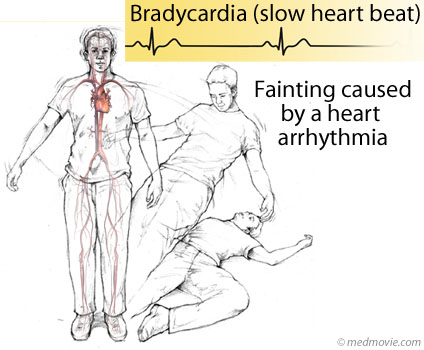
Adams-Stokes Disease
Adams-Stokes disease is a temporary condition caused by a heart arrhythmia (see fig. 1). Adams-Stokes is caused inadequate blood flow to the brain resulting in fainting (or syncope). The inadequate blood flow to the brain is caused by a slow heartbeat, an arrhythmia known as bradycardia (see fig. 2). Bradycardia is usually the result of a slowly firing SA node or an interruption of the electrical signals traveling to the ventricles of the heart (see figure 3). The SA node (the pacemaker of the heart) may fire too slowly resulting in slower heartbeat. The electrical signals from the atria may also fail to travel beyond the AV node to the ventricles (known as heart block).
Figure 1: Fainting (syncope) caused by a heart arrhythmia.
Figure 2: A normal ECG compared to an ECG showing bradycardia (a slow heartbeat).
Figure 3: Locations in the heart that may cause bradycardia.
Visit Medmovie.com Website for more information.


